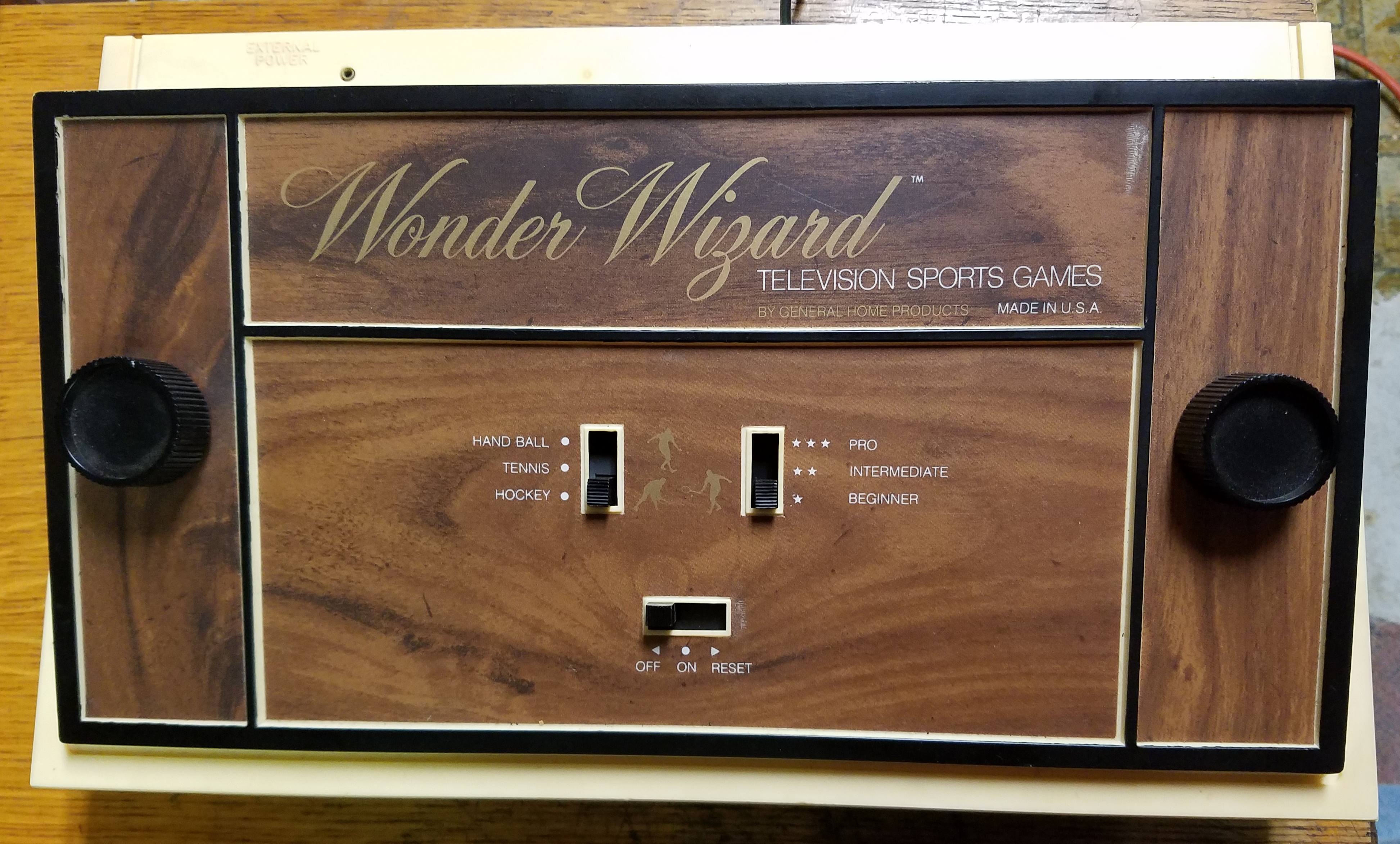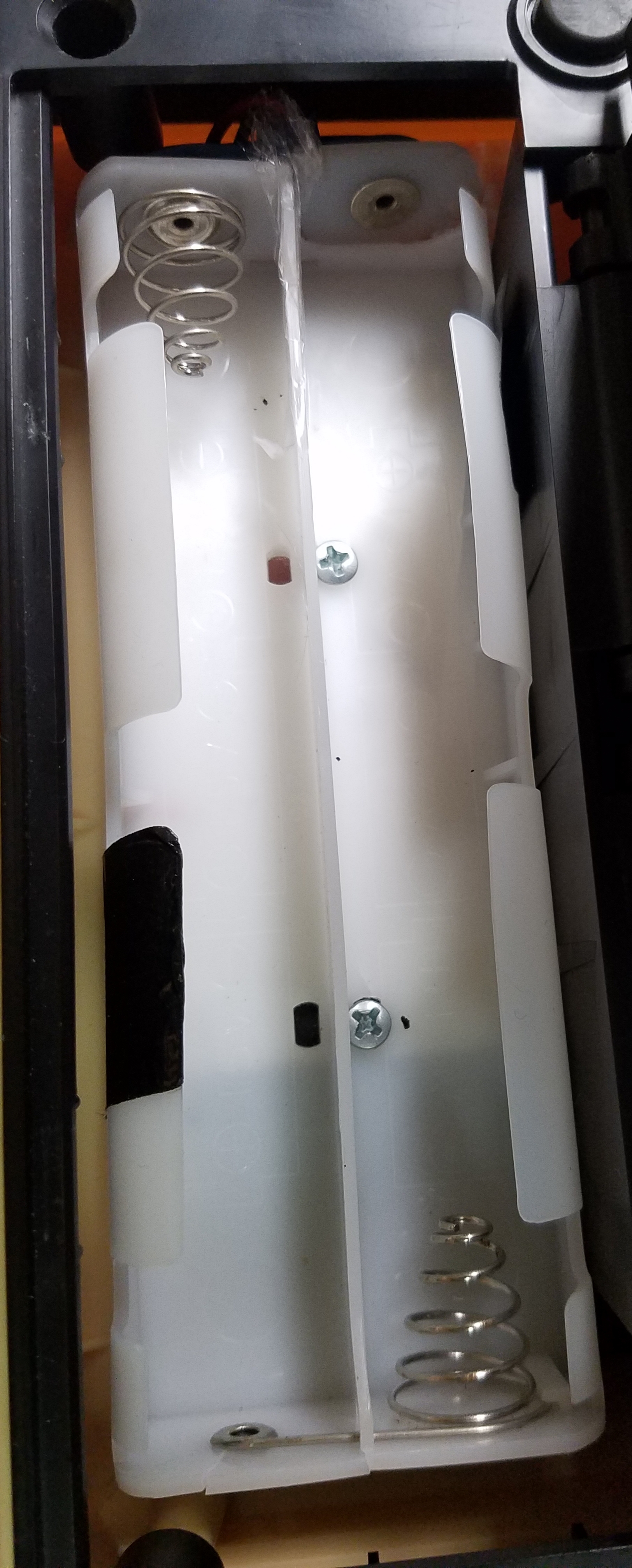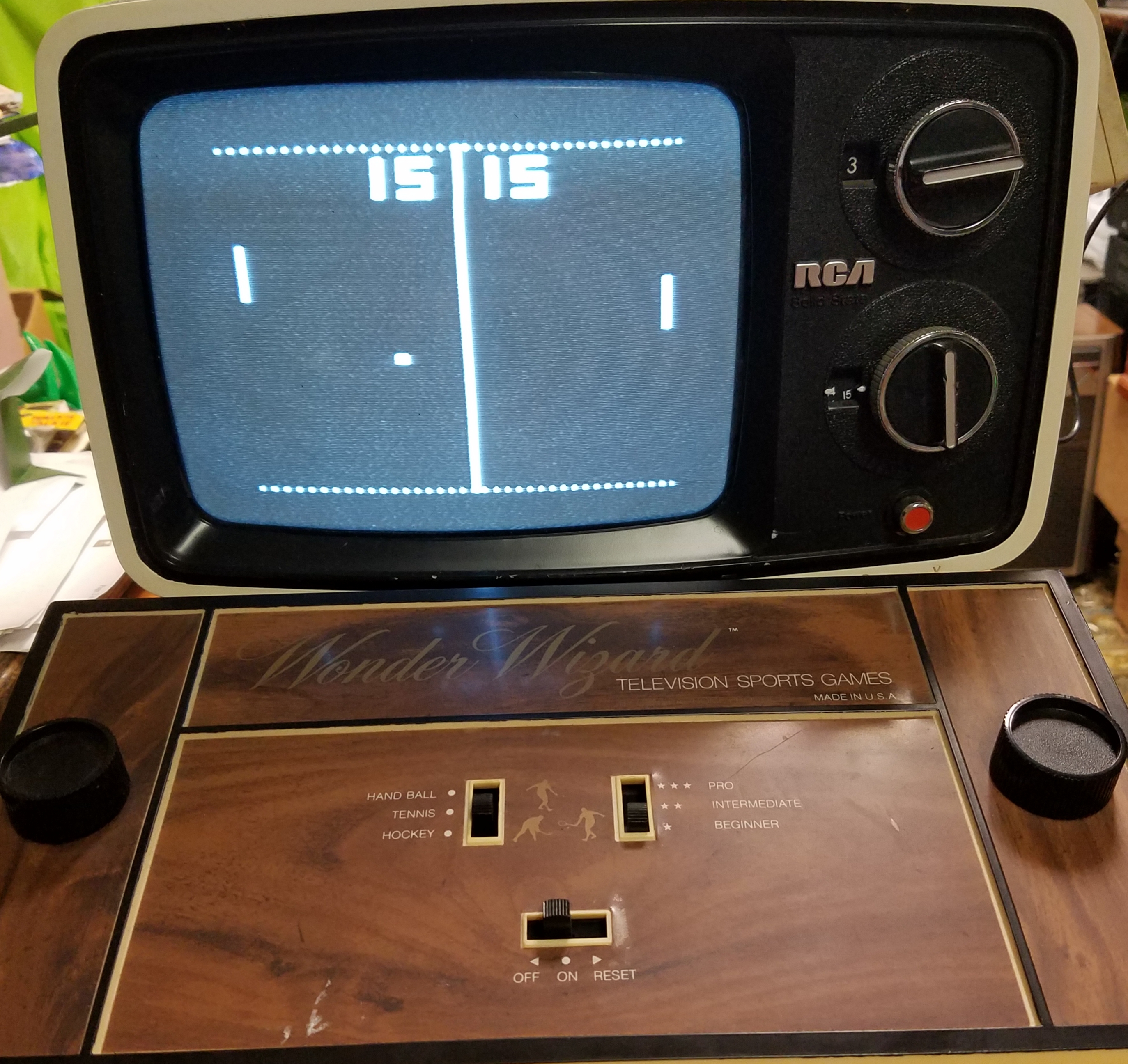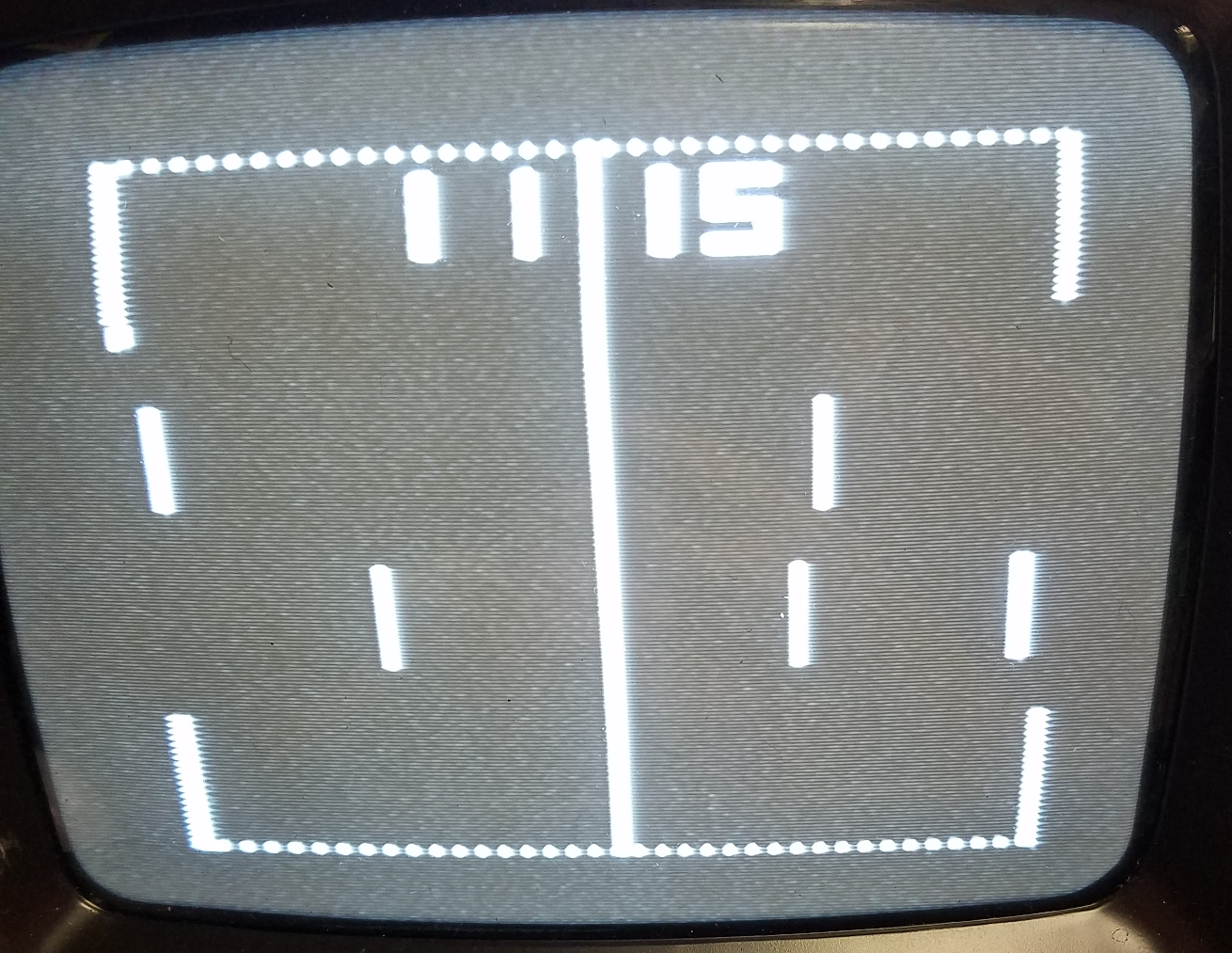Like everyone else, we’re still under pandemic alert here, but the majority of places have reopened, and that means thrift stores. Oh I’ve been making up for lost time with a vengeance alright – albeit with a face mask on and an antisocial social distancing attitude at the ready. (It’d be nice to think that everybody realizes we’re all in this together, but considering I’ve encountered more than one person who just doesn’t seem to “get” it, well, it kinda astounds me. I mean, is it really that important to you to stand only a foot away and incessantly babble about inconsequential nonsense to a perfect stranger? We’re not friends, I don’t know you, lea’ me alone. Though truthfully, I’d feel the same way even if there wasn’t a rampant virus afoot. Oh, do I sound cranky? GOOD.)
Anyway, I’ve brought home a buncha good stuff since being back in action; lotsa new additions to my music library, some great old mugs/glassware for that particular collection, a multitude of miscellaneous items that pique my interest; plenty o’ stuff I’m happy with. BUT, as far as things that I can really get fired up enough to write about here, frankly, not as much as I’d like. Seriously; I came close with a big ol’ bag of early-to-mid-80s erasers that held several cool objet d’art within, but after some preliminary writing, I decided there probably still wasn’t enough to hold the attention of all four of my regular readers. (Though, fun fact, most of that introductory paragraph was ripped from that otherwise-cancelled article.)
I don’t know if the drought has passed, but if nothing else, I was recently given a brief respite as far as blog-worthy material goes, and it’s our subject today. (“Gee, no kidding!”)

Behold! It’s the incredible Wonder Wizard “Television Sports Games” console, released by General Home Products in (according to this site) June of 1976 – a whopping 44 years ago this month! What constitutes “Television Sports Games,” you ask? It’s, uh, Pong. Or rather, “tennis” because non-name brands. But really, it’s Pong. Well, that and some other games that go by the names of other sports but are really just slightly-modified Pongs.
Yup, this Wonder Wizard (model number 7702) is one of many, many “Pong clones” that made up the first generation of home video games. No joke; there were a ton of these that eventually saturated the market before developers figured out swappable game cartridges just might lead to a longer lifespan of console sales. (“Yeah, sure, uh huh!”)
(Because I know someone will jump all over me if I don’t specifically point this out, the well-known famous Pong wasn’t really the first Pong, either; there was a ping pong game for the first-ever-console, the Magnavox Odyssey, that Pong was “inspired” by. Nevertheless, it was Pong that really gave a jump start to the video game industry. Also, I’ve now grown tired of typing the word “Pong.”)
I hope you’ll agree that the 1970s aesthetics of the Wonder Wizard are just fantastic. As you can see, woodgrain was the order of the day, and as such, the console evokes its era in a way that practically reaches out and paints a leisure suit on you.

Hopefully this side-view pic above gives you an idea of general size of the system. Unlike many of these clones that could be on the small/cheap/etc. side, there’s some real bulk to the Wonder Wizard. Not that it’s heavy; it’s not. But size-wise, it’s decent. Hey, more real estate, more woodgrain! And like said woodgrain, the general design of the shell is very 1970s, and thus very cool. It’s hard to imagine this coming from any other decade!
So, just where did I find the wonderful Wonder Wizard 7702, you ask? Frankly, I’m hesitant to give up the location because the last thing I need is more competition, but rest assured, it was a thrift store I hit up frequently. And trust me, the Wonder Wizard really pushed the limits of the term “thrift.” That word implies something budget-conscious, and while Wonder Wizard wasn’t (alliteration) prohibitively expensive, it came a little too close for my comfort. I mean, it wasn’t like it was the equivalent of a PS4, and indeed, it cost less than the average brand new PS4 game. Still, for someone who balks at dropping more than $10 per thrift visit, the price tag wasn’t ideal, especially since I had no sure way of knowing if it worked. (More on that issue in a bit.)
As I approached the electronics section in which Wonder Wizard was residing and it became increasingly obvious that whatever I was looking at was an uber-old console, my first thoughts were of the aforementioned Magnavox Odyssey. Had I been thinking clearly I’d have recalled that the original Odyssey featured wired controllers, but obviously all questions were dispelled once I actually picked the thing up and saw the name.
Though, while I didn’t know it at the time, I actually was in the Odyssey wheelhouse. See if you can follow this, because it can be a little confusing: the original Magnavox Odyssey came out in 1972 and used “game cards” to access different types of games (these weren’t ROM cartridges though; scroll back up to that Wikipedia link for a better description), and that system gave way to a line of dedicated Odyssey consoles in 1975 and which continued for a few years until the Magnavox Odyssey 2 superseded the whole lot of them. As far as the line of dedicated consoles goes though, this Wonder Wizard is internally a Magnavox Odyssey 300, and externally a modified shell of the original Magnavox Odyssey. Well, at least the base is identical; here, let this site tell you more about it.
Put simply, the Wonder Wizard is a re-badged Magnavox Odyssey 300 console. Though truth be told, I think the Wonder Wizard looks much cooler. Check out the Wiki link and compare for yourself! (Also, reading that page on the dedicated console series, MAN did they have a lot of superfluous entries in the line. Minute-at-best modifications would apparently warrant a whole new console release!)

The Wonder Wizard wasn’t the most feature-heavy Pong clone ever released; there’s really not a whole lot of options at your disposal here. We’ll take a closer look at the games themselves momentarily, but for now, here’s what you get: hand ball, which is tennis played against a solid wall. Tennis, which is just Pong but not really but actually is. And hockey, which is tennis with more paddles and smaller “goalie” areas. (It’s only the sport of hockey in the most rudimentary sense.)
Curious about the difficulty options seen on the right side of the panel here? Why? They’re kinda self-explanatory, aren’t they? Oh alright, I’ll explain: “beginner” is supposedly the easiest setting, with larger paddles and a somewhat slower ball – it plays pretty much how (I guess) people would expect a Pong-type game to play. “Intermediate” shortens the paddles, and “pro” puts the paddles back to their original length but speeds the ball up considerably.
I probably would have changed the labeling of the difficulty settings somewhat, or at least renamed “beginner” to “normal” or something.
The underside of the Wonder Wizard is pretty barren, with only two things worth noting as  far as I’m concerned. (In other words, y’all don’t need a pic of the whole bottom of the console.)
far as I’m concerned. (In other words, y’all don’t need a pic of the whole bottom of the console.)
First, there’s this label, amazingly still affixed to the beast despite the 40+ years that have elapsed since the original, uh, affixation. See, 7702. Did you think I was lying? I wasn’t. And look; FCC approved!
I don’t really have much more to say about the label (what more can I say?), so I suppose now is as good a time as any to mention that this particular Wonder Wizard wasn’t the only one released by General Home Products. Nope, according to this site, there were several other machines under that name. From the little bit of research I’ve done since acquiring this machine two days ago, it seems like the 7702 gets the most “press” online due to the Magnavox connections – and I assume because it strongly looks like it should be played by someone with oversized lapels – but I’d still say it falls more on the obscure side of the Pong clone spectrum overall. (Though truth be told, beyond Atari and their Sears Telegames rebrands, the Magnavox Odyssey and the Coleco Telstar lines, the vast majority of these Pong systems seem, to me, to fall on the obscure side.)
 Here’s the other thing of note on the underside of the console: the battery compartment. Now, the Wonder Wizard 7702 does accept a power adapter, but such things were not included with mine. That’s okay, I’m used to it, and besides, as was common with these Pong clones, the option to use batteries was often (always?) included as an alternative. This was beneficial, because while I could have dug up or otherwise found a replacement adapter, I’m generally leery of such things, having once fried an Atari Jaguar many years back. (The subsequent ‘pop’ and wisp of smoke that arose from the Jag told me I probably did somethin’ bad to it. It was obviously my fault for not being more careful looking at the specs of the machine and the adapter, but hey, live and learn. I wound up getting a ‘good’ Jaguar later down the road anyway.)
Here’s the other thing of note on the underside of the console: the battery compartment. Now, the Wonder Wizard 7702 does accept a power adapter, but such things were not included with mine. That’s okay, I’m used to it, and besides, as was common with these Pong clones, the option to use batteries was often (always?) included as an alternative. This was beneficial, because while I could have dug up or otherwise found a replacement adapter, I’m generally leery of such things, having once fried an Atari Jaguar many years back. (The subsequent ‘pop’ and wisp of smoke that arose from the Jag told me I probably did somethin’ bad to it. It was obviously my fault for not being more careful looking at the specs of the machine and the adapter, but hey, live and learn. I wound up getting a ‘good’ Jaguar later down the road anyway.)
So yes, if I was going to play this thing, it was going to be via six big ol’ size “C” batteries. Unfortunately, the sole issue regarding the condition of the Wonder Wizard – and I was cognizant of this while still at the thrift store – is in regards to that battery compartment. The problem? Look at the top right of this picture, and you’ll see that the plastic around the battery connector (is that what it’s called?) has broken. The connector itself isn’t broken, just the plastic (hey, it is over 40 years old), and as such, I knew there was a strong possibility that I’d have to play Bob Vila and do a little repair work when I got home. Fiddling with some new batteries and the connector later that first night, I did get the unmistakable beeps and boops of Pong to emanate from the system, so I had a good idea that the system worked in some fashion. So the next day (yesterday to you), I opened the whole thing up, used a roll of adhesive (that’s tape to you), and began the process of sturdily taping the connector back in place just enough to make adequate contact with the batteries.
I discovered while having the Wonder Wizard opened that except for the battery compartment, the thing was in exceedingly decent, clean shape. (Same goes for the outside of the unit; it sure appears to have been well taken care of!) Due to the wiring inside, it was tougher to get a decent view and/or my big meaty paws in there than I expected, but eventually I prevailed to the point of “good enough.” Remember, this wasn’t a big time restoration job; the batteries just had to make decent contact.
We’ll get to the fruits of my labor momentarily, but long story short: I was successful. It was an achievement worthy of me stomping around the neighborhood and hollering “I is MacGyver!” over and over. I didn’t, because that would have drawn the consternation of my neighbors and I generally try to avoid them. But I could have.
(This battery compartment picture was actually taken after all was said and done, and as such you can see some of my expert professional tape job in it. I had it taped into place better than it appears here; I accidentally pushed the thing back out when removing the batteries. “These pics aren’t in sequential order in regards to the story at hand?! Say it ain’t so!” That black tape to the left was there when I got the thing, and I just noticed the relatively minor cracking in the bottom left corner a moment ago. If I ever do much work with this thing again, it’ll be via an actual power adapter, lest I make things worse than they already are.)
There was one other issue regarding the hooking up of the Wonder Wizard to a TV, and though I didn’t fully quite recognize it as such at first, it was actually a far more pressing issue than the battery compartment. If I didn’t get that thing going, I’d just find an adapter. But if this other issue didn’t work out in my favor, I was in some actual trouble.
The Wonder Wizard has the RF cable hardwired right into the console, which is all fine and  dandy. But, because this was actually made by Magnavox, the Wonder Wizard is subject to the same trappings as the Odysseys, and that could cause issues nowadays.
dandy. But, because this was actually made by Magnavox, the Wonder Wizard is subject to the same trappings as the Odysseys, and that could cause issues nowadays.
How so? Look at this RF plug here; doesn’t look like your usual RF plug, do it? Magnavox used what was, I believe (correct me if I’m wrong), a proprietary format for their Odysseys. That’s to say, unique. In other words, you need the appropriate switch box that matches with this plug before you can connect the thing to your TV. I consider this to be decidedly “whack.”
(Could someone do some splicing/soldering/etc. and make this relatively more compatible, i.e. with a more common set-up? Probably, but I have no such skills, and besides, I’d be worried about messing up my one and only example of the console.)
 Fortunately, I had just such a switch box, from a Magnavox Odyssey 2000 I got at a different thrift store many many years ago. That 2000 is in somewhat iffy condition so I never even attempted to use it, though coincidentally, that Wiki link says it’s basically an updated Odyssey 300. I just can’t get away from that thing!
Fortunately, I had just such a switch box, from a Magnavox Odyssey 2000 I got at a different thrift store many many years ago. That 2000 is in somewhat iffy condition so I never even attempted to use it, though coincidentally, that Wiki link says it’s basically an updated Odyssey 300. I just can’t get away from that thing!
The 2000 has just been floating around my basement since acquiring it, so it’s nice to see that it’s finally earning its keep by providing the original Magnavox switch box for me to use here. And in a pleasant change of pace, I didn’t have to go through a laborious search to unearth it! It was grimy enough to make me wonder if it even still functioned however, providing me with yet another “I ain’t know” in regards to whether I’d ever get the Wonder Wizard displaying on a real TV or not. But, at least I wasn’t completely out of luck. Yet?
So, everything’s hooked up, and while there was some trial and error and aforementioned battery compartment-fixin’, the results eventually yielded were…

…An earthshaking success! I am the man! I. AM. THE. MAN. Time for a bizarre touchdown dance? Maybe!
Remember my cool 1975 RCA portable TV seen both here and then here? It was the only relatively-accessible TV with the old school screwy RF antenna jack things in my immediate vicinity, so as you can see, out it came. Plus, playing a Pong clone on that TV feels right; the Wonder Wizard displaying on that uber-retro television set, I mean, it just looks cool. The woodgrain of the console, contrasting with the sleek, smooth 1970s-ness of the TV – the old school gaming vibes are strong with this one! Though, I did have to remove the protective face cover on the TV before taking pictures, since it was apparently made of the most reflective substance in the universe and I didn’t need y’all inadvertently seeing the look of utter awe and/or joy on mah face.
Like I said earlier, when messing around with the batteries, I did get sound to emanate from the machine (this is one of those old school consoles in which all sound effects come straight out of the system and not the TV as you’d expect), so something somewhere somehow worked. Nevertheless, it was a moment of sheer exhilaration (or at least relief) to see that the money wasn’t wasted to bring the Wonder Wizard home.
(I would have liked to get some actual screenshots of this console in action for this article, as opposed to mere pictures of it playing on a TV. Now that I think of it, I guess I could have screwed this unique switch box into a common, generic switch box, and then screwed that into the back of a VCR, and then plugged that into the VCR I have connected to my PC. But boy, that sure sounds like an awful lot of work for an article only three people will look at and only half will actually read.)
What you’re seeing displayed above is tennis aka Pong aka ping pong aka still tennis. It, uh, acts exactly as you’d expect it to. It’s Pong, what more can I say? I did discover that the paddles are pretty jittery on the Wonder Wizard, so actually playing the thing isn’t really feasible. I fully expected this, such things are very common with these dedicated consoles; cleaning the knobs would solve the issue, should I so desire.

This here is hockey, or rather what is purported to be hockey. I mean, technically I guess it is. You’ve got your goalies, and, uh, other guys. I have no idea why the right side features three players while the left side only has two; maybe the right side had a power play?
No matter, cause guess what, CPU? My superior 2020 intellect and advanced game playin’ skillz are about to take you down! Let’s rumble!!!
…Oh wait, the Wonder Wizard is two players only. Yep, in an annoyingly endearing trait of early video games, the option to play by your lonesome is, erm, not an option at all. Don’t have anybody to play with? Guess you’re playing you, then! First one to 15 is the victor! Hey look, I won!
 And here’s the hand ball variation. Tennis/Pong and hockey may hold more gravitas in comparison, but had the paddles not been so jittery and I felt like browbeating someone into playing with me, I could see this one being potentially pretty fun.
And here’s the hand ball variation. Tennis/Pong and hockey may hold more gravitas in comparison, but had the paddles not been so jittery and I felt like browbeating someone into playing with me, I could see this one being potentially pretty fun.
As it stands though, it’s, uh, hand ball. You slam a ball against the wall and, I guess, hope the other person misses it? Are those the rules? Hey look, I won again! 15 to 1!
This raises the question though: was there ever a legit Pong variant of Jai Alai? Or, dare I dream it, Bocce Ball? (Those two sports don’t really have anything to do with each other and I’m not very familiar with either one; I’m just writing filler here.)

While taking pictures for this article, I thought turning the light off might improve the quality of the shots my phone was taking of the television screen. The difference was negligible, but I did get this really cool pic of the Wonder Wizard illuminated by the light of said screen. it evokes, I don’t know, bell-bottomed kids staying up late into the night playing this wonder of technology or something. “It’s far out, man!” Wait, were people still saying “far out” in our Bicentennial year of ’76?
So there you have it, the Wonder Wizard Television Sports Games (aka Magnavox Odyssey 300) console. Is it antiquated in both looks and gameplay? Well, yeah, I guess. But you know, I absolutely love the overt 1970s look of the console. And the gameplay? I hate the thinking that just because a game is old or graphically challenged (or another apparently popular one: pre-NES), it can’t possibly be any good. Yes, the game variants here are all primitive to the max, but I can absolutely still see some potential head-to-head fun being had here.
And really, this is pure gaming history. Okay, sure, in comparison to other Pong systems it’s probably a relatively minor piece, but nevertheless, the Wonder Wizard is still a part of that de facto first generation of home video games. (You thought the Atari 2600 was first gen? Sorry ace; that and consoles like it are actually second gen.)
Is the Wonder Wizard my new favorite Pong clone console? Well, I’m definitely fond of it (for what it cost, I better be!), and I do indeed collect these consoles in general, but it still doesn’t top my two favorite dedicated consoles from the era: the Coleco Telstar Arcade, which is so (relatively) advanced that calling it a mere “Pong clone” seems like a serious understatement, and Atari’s Video Pinball console, which isn’t even really a Pong system at all.
Still, the Wonder Wizard is neato, man. You know what it sorta recalls to me? Lemme see if I can explain this: due to the look of it, it just seems like something that was bought and played, and then just sorta became ‘part of the scenery.’ Not relegated to the basement or attic exactly, but just sort of there, kind of more like a piece of furniture than something anyone ever really thought of playing by a certain point – especially once more advanced consoles started coming out. Maybe it was dusted and kept clean fairly clean (this example is still in very nice shape), but was paid little attention to otherwise.
Does that make any sense at all?
I don’t know, maybe I’m putting too much thought into this. Anyway, the Wonder Wizard 7702: it looks neat and cool and strictly of its time, it plays fine (well, except for the jittery paddles), and it’s now part of my collection. What more could a vintage gaming system ask for?
